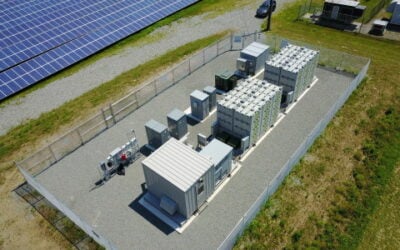
Market conditions are “artificially” restricting energy storage batteries from “leveraging and maximising their multiple capabilities” a US trade group which includes utilities, technology and service providers and grid operators among its membership has argued.
GridWise Alliance represents stakeholders with an interest in the electric grid, including those that design, build and maintain grid networks and academics that study it. Its leadership includes CEO Steve Hauser, who was formerly with the National Renewable Energy Lab (NREL), along with directors from companies including IBM, Lockheed Martin Energy, utility Pacific Gas & Electric (PG&E), Navigant Consulting, GE Grid Solutions, Xcel Energy, ABB and many others.
In “Advancing batteries to enhance the electric grid, Chapter One: Front-of-meter applications”, the Washington-headquartered GridWise Alliance looked at existing challenges to the widespread implementation of energy storage on the grid. The headline result is that the group has put forward 11 separate recommendations for policymakers that could support better integration of energy storage into energy networks.
Dealing with front-of-meter devices connected directly to transmission or distribution lines, the Alliance’s whitepaper talks up the usual touted benefits of energy storage, particularly batteries. As will be familiar to Energy-Storage.News readers, these include reduction of grid operating costs, enhancement of grid operations and customer services and on a societal level, adding skilled jobs to the workforce and contributing to environmental goals such as emissions reduction.
Try Premium for just $1
- Full premium access for the first month at only $1
- Converts to an annual rate after 30 days unless cancelled
- Cancel anytime during the trial period
Premium Benefits
- Expert industry analysis and interviews
- Digital access to PV Tech Power journal
- Exclusive event discounts
Or get the full Premium subscription right away
Or continue reading this article for free
“Policy makers are being asked to make very important decisions that will have implications on the public and on the potential growth of this innovative new clean energy industry. As an organization representing utilities and RTOs, technology and service providers, and academia, we have a responsibility to provide them the tools to make those decisions efficiently for the benefit of all consumers today and tomorrow,” GridWise Alliance policy director Ladeene Freimuth said.
Recommendations
GridWise’s 11 recommendations include a suggestion to resolve a longstanding complication in energy storage regulation in the US and elsewhere – defining exactly what it is and what it does. To this end, the group says that batteries which have supporting transmission or distribution networks as their primary purpose should be classified as transmission or distribution assets.
The alliance also wants markets to open up – it recommends that electric distribution company-owned (EDC) and rate-based energy storage assets should be allowed to participate in services markets for energy, capacity and ancillary services. GridWise also feels EDCs should be allowed to have visibility into and control over which projects will go onto their networks.
Recognising the versatility of batteries, another key recommendation is that “policy makers must ensure that batteries can offer all of the services they are technically capable of offering and be compensated fairly for those multiple services”.
GridWise also argued that policymakers should set up demonstration and pilot programmes to “effectively assess batteries’ optimal applications, societal benefits and system impacts”, the whitepaper said. As well as testing and finding the right technologies, these types of project could also help develop the most effective business models and rate design structures, as well as regulations.
Perhaps in a nod to ongoing changes at the Whitehouse which have included the removal of terms like “climate change” from official government websites, GridWise also argued that the US Department of Energy (DoE) should fund its own demonstration and pilot projects, promoting knowledge-sharing in the process.
“The DOE also should continue to fund robust research and development efforts to further expand battery capabilities and lower costs,” the document said.
According to GridWise, the rapid evolution of battery energy storage technology has meant that markets, the regulatory space, cost mechanisms and so on are yet to catch up. The group advised that policy makers should “re-examine existing policies and modify or create new ones as needed.”
Download the GridWise Alliance whitepaper here.





